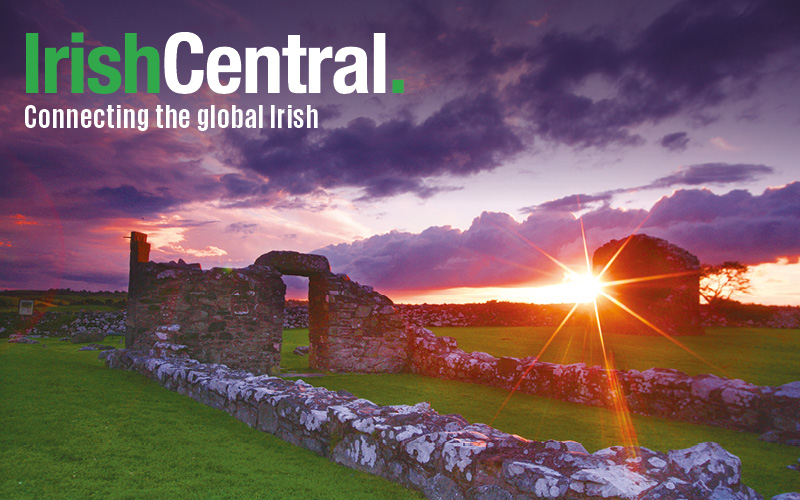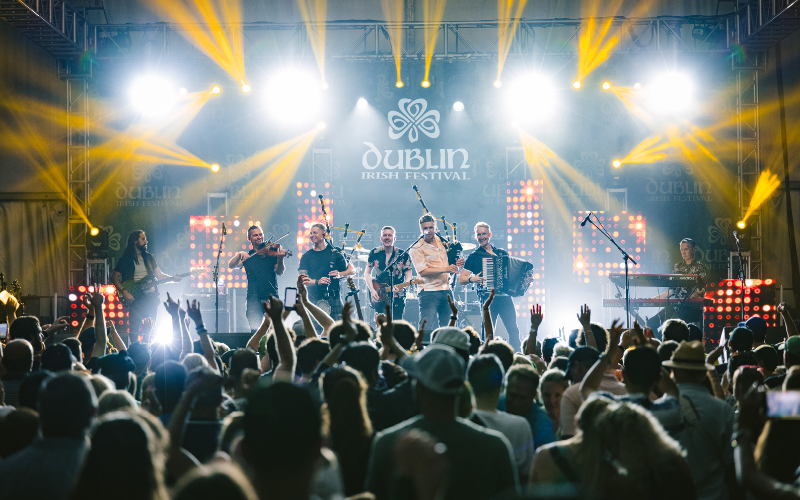The music that accompanied the Mass last week for the dean of Irish dance teachers in North America, Peter J. Smith, seemed tailor-made for a fitting tribute to his illustrious career.
The Mass was led by the Belfast-born Chris McLoughlin, whose stentorian voice filled the church of St. Vincent de Paul in Stirling, NJ for the Irish hymn “Our Lady of Knock” and as the liturgy came to a close “Come Back Paddy Reilly to Ballyjamesduff.”
Smith also had made a special request to the family when his time came to have the popular flutist Joanie Madden in the church as well. Madden, along with accordionists Chris McLoughlin Jr., Brian Glynn and Annmarie Acosta Williams, were Irish American musicians who were as well-known within the Irish stepdancing community as they were in the Irish music scene.
When they played tunes like “Lord of the Dance” and the reel “Peter Street” it was their way of acknowledging a man who inspired so many in the Irish dancing community for most of his long life.
The news of his passing on December 28 spread rapidly around the Internet and across the Atlantic and all over the world, and while his exact age was a mystery it would be safe to assume he was pushing towards the 90 mark.
One of nine children born to natives of Ballyjamesduff, Co. Cavan, Delia O’Reilly and Peter J. Smith Sr. in Glen Ridge, NJ he indeed made his mark on the world and in his beloved Irish community.
His father was a musician who played the fiddle and tin whistle around the house, and they encouraged a love of Irish music, song and dance. Peter had a fine tenor voice that brought him to the Juilliard School of Music High School where he developed into a concert soloist.
Along with his sisters Peggy, Honora and Anne and brother Gene they performed as the Smith Family Entertainers, and Peggy served as his first dancing teacher. They both studied with Professor McKenna in New York.
He saw service in World War II in the Medical Corps of the 106th Evacuation Hospital operating in England, France and Germany even as the fierce fighting around the Normandy Invasion was taking place. His three year stint in the U.S. Army produced many commendations before he was honorably discharged.
After he returned from the war Smith continued to perform with the family group and to compete in Irish dancing. Around New York two brothers, Peter and Cyril McNiff from Belfast, were making a name for themselves with new footwork common to the north of Ireland that overtook the Munster style of dancing that had predominated teaching in the U.S. until that time.
Smith was enamored with the new style, and the brotherly pair took him under their wing for their classes around New York. Along with their younger sister Joan McNiff, they developed a performance troupe known as the McNiff Dancers which showcased their brilliant Irish stepdancing choreography around the country and over the early television waves in shows like "The Ed Sullivan Show" and "The Arthur Godfrey Show."
Smith opened his own Peter Smith School of Dance in 1957, and over the next five decades he played a pivotal role not only as a master dance teacher to thousands of students from many families around New York and New Jersey, but as a very encouraging mentor to those who would go on to become teachers and adjudicators also.
He maintained a very high standard of dance for his students that helped them capture many championships in North America and to compete successfully abroad also, and that expertise and pride was handed down to those whose teaching careers he fostered.
Smith became the first president of the Irish Dance Teachers of North America (IDTANA) in the mid-1960s when he and fellow dancing teachers Anna O’Sullivan, Fidelma Davis, Joan McNiff Cass and Michael Bergin saw a need to bring more regulation and structure into the realm of Irish stepdance instruction and competition. That organization started small but with high hopes which were realized well before the Riverdance bonanza swelled the ranks.
At Smith’s Funeral Mass, former student Jimmy Friel, now a teacher in the Smith School, told those in the congregation that IDTANA now had over 900 certified teachers. Smith was known to be one of the more gregarious people you would meet anywhere with a broad and ready smile, and nothing pleased him more than to see a new flock of certified dance instructors come up through the ranks, and it was something he worked very hard to accomplish.
Smith’s Trojan efforts on behalf of the Irish dance community in North America won him great respect not only here but also in Ireland where he was a delegate for many years to An Coimisiun Le Rince Gaeilge, the primary dance body regulating Irish step dancing around the world and organizers of the largest dance competition known simply as the Worlds.
In 2005 he became president of An Coimisiun as the first American to hold that title, and one of his dream goals was to see the world championships of Irish dance come to America. In 2009 the event was held in Philadelphia, the first time ever held outside of Ireland or the U.K.
Smith’s love of Irish culture was also shared broadly with his New Jersey friends and neighbors as he was a well-known and popular figure in many Irish community organizations.
In 1985 he was chosen as the grand marshal of Newark’s St. Patrick’s Day Parade where for many years he sang the Irish and American national anthems to kick off the parade.
One of Smith’s grander legacies will be the community building efforts he brought into Irish stepdancing outside the competitive role usually associated with it. In that vein, when the late, great tenor Frank Patterson and his wife Eily O’Grady took on the ambitious tasks of producing shows at Carnegie Hall or Radio City Music Hall around St. Patrick’s Day, he turned to the veteran Smith and the up and coming master Donny Golden to organize a spectacular dancing display.
Bringing in 140 step dancers from as many as 18 different dancing schools was a logistical challenge for sure, but the collaboration between the old master and the new created a bit of fun for the dancers off the competition platforms along with wonderful memories for their families.
And it reinforced one of Smith’s credos that Irish dancing was about celebrating and passing along Irish culture, not just for the accumulation of medals and trophies in competitions.
The Church of St. Vincent de Paul served as the place where Smith was waked and remembered lovingly in eulogies by long-time friends and teenage students of his in Patsy Early McLoughlin and the aforementioned Jimmy Friel that were shared over the internet with friends and family in Ireland.
Almost half of the 900 or so who attended the Mass on a bitter cold January 6 went back to the Primavera Restaurant for a meal and celebration for the beloved dancing master. More wonderful words were spoken about the man who seemingly was the favorite uncle or godfather of so many assembled or around the world over his long life.
The ultimate salute as you would imagine would come from the dancers themselves in a “stepabout” that included the old and the young and everyone in between, including many of those dancing teachers who followed in his famous footsteps.
This rousing sendoff was captured by one videographer on the day who also managed to poignantly film a dance choreography based on the Irish fable about the Children of Lir, a fitting image to remember a man who gave so much to our Irish children and adults for so many years.
God must have had a need for a top-notch Four Hand Reel up above as 2013 saw four of the great American dancing masters in Dennis Dennehy (Chicago), Jimmy Erwin, Jerry Mulvihill and Peter Smith all leave us. Fortunately they taught so many to follow in their footsteps.




Comments